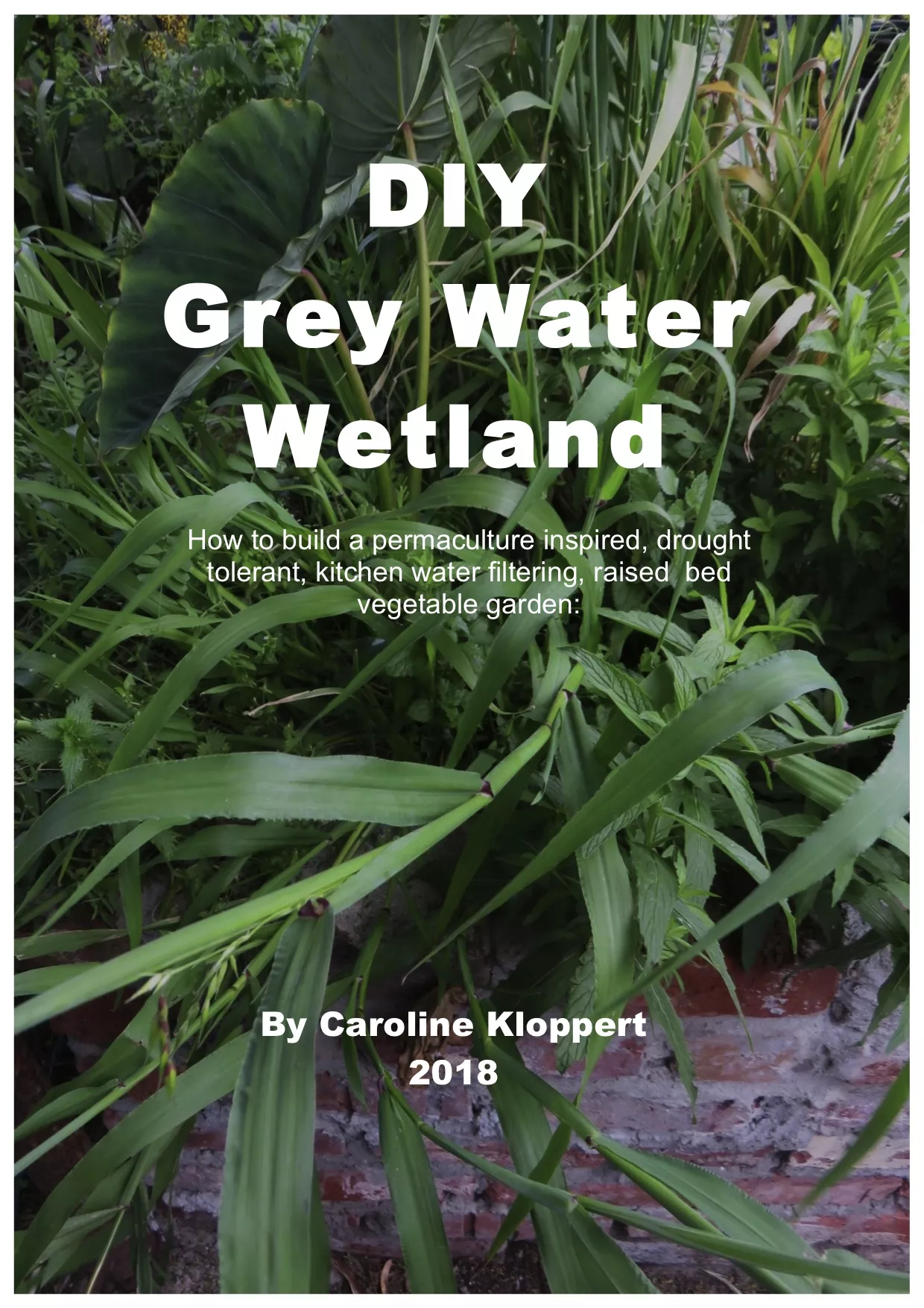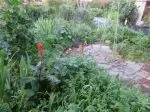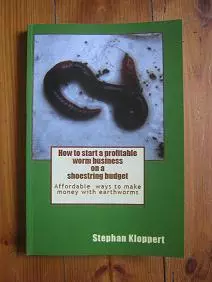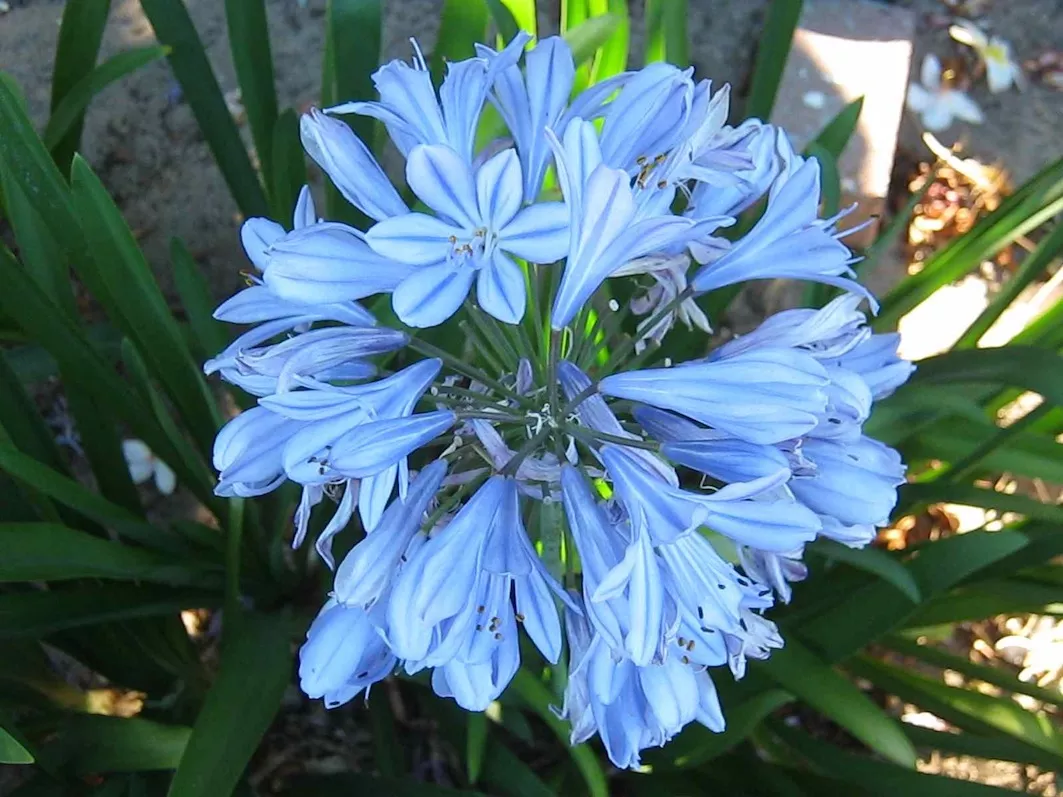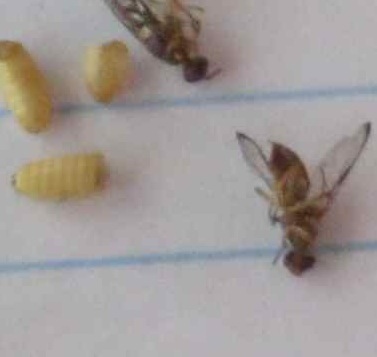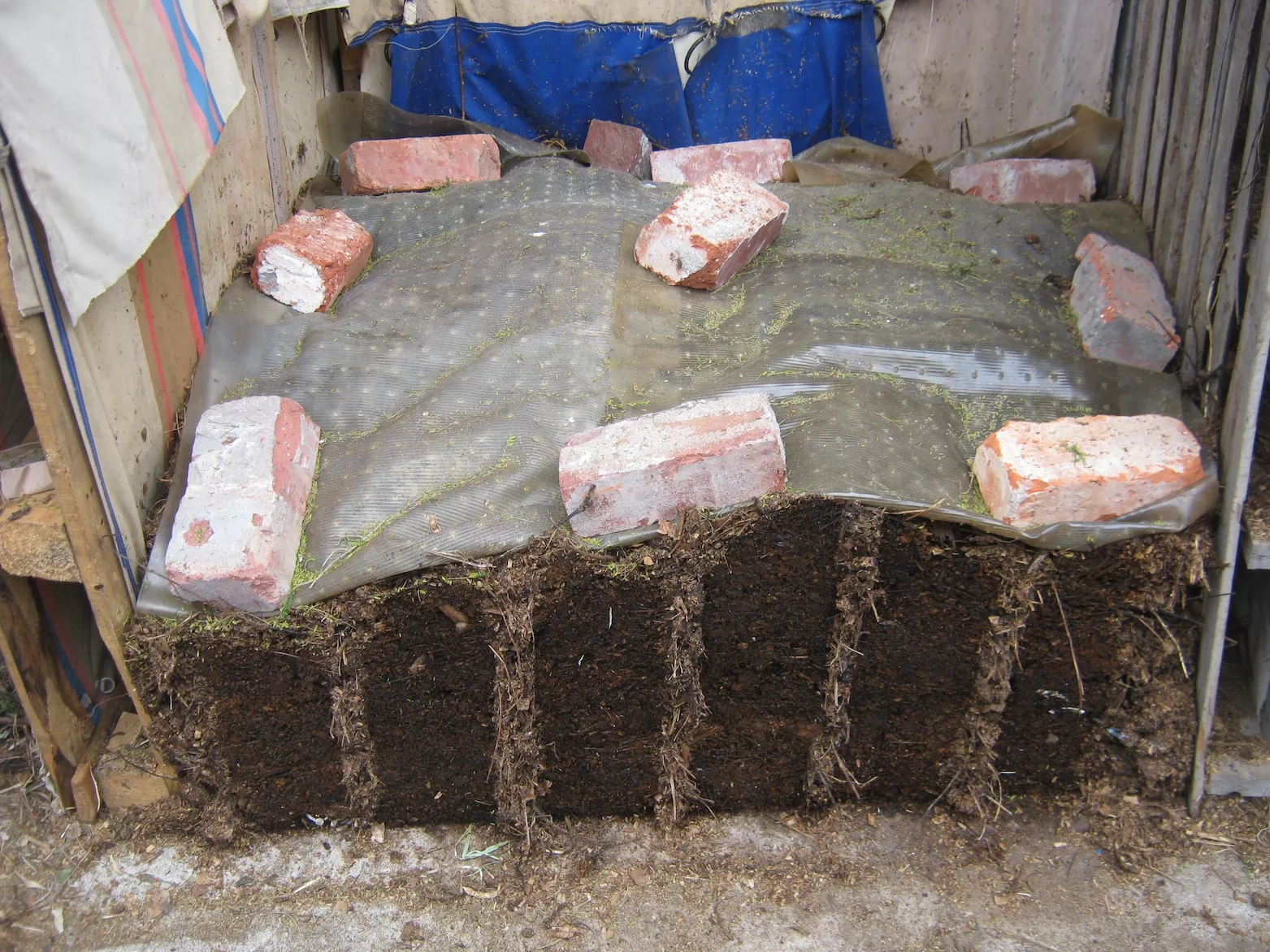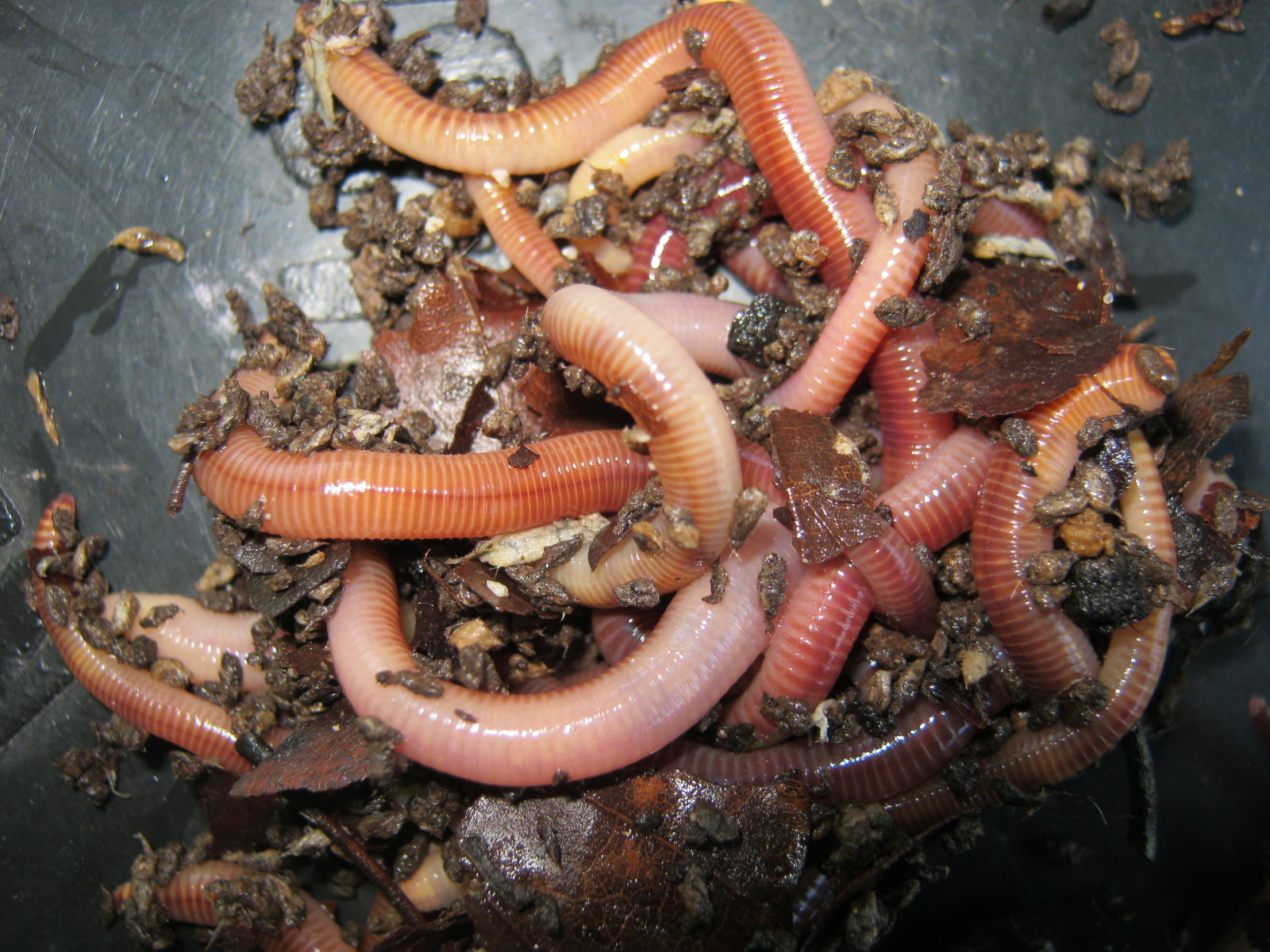Dear Reader, in this age of AI created content, please support with your goodwill someone who works harder to provide the human-made. Sign up in the righthand column or bottom of this page. You will receive my hand illustrated monthly newsletter RESTORE NATURE and access to the biodiversity garden design course as I write...and nothing else, I respect your time.
bed preparation hacks in urban permaculture
Here are some bed preparation hacks used in urban permaculture that I learned working as a volunteer under Imraan Samuels. I watched with admiration as he turned whatever materials he could find into the foundation of a
green paradise. Adding a few hacks of my own, I used what I had available free of charge to prep a bed roughly fifteen metres square for my husband's seedlings.
After attending a wonderfully rich two week PDC course offered by Alex Kruger and Tahir Cooper, I knew that I had to contour the bed a little, because it sloped towards the wall, and I constructed the paths to contour roughly and prevent too much run off from the beds.
 bed preparation hacks enable quick vegetable beds without tillage
bed preparation hacks enable quick vegetable beds without tillageCan't wait to apply the hacks I learned doing a Permablitz
Below you can see the broad path pattern, as well as one of our worm-bins in the corner, housed in an old bath. Its perfect for worms, drains slowly from the plug hole, and is covered with a board and old carpeting, to prevent drying out. Worms dislike or die from heat, dryness and smelly gases. We feed this bin mainly with kitchen scraps. Cultivation of worms is highly recommended for the vegetable grower. Vermicast improves germination and soil quality and fertility.
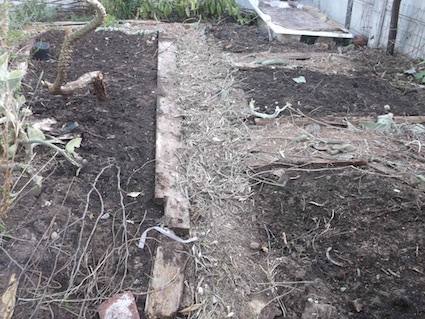 compost mulch on beds, olive branches on paths
compost mulch on beds, olive branches on pathsBED PREPARATION hacks IN URBAN PERMACULTURE CAROLINE STYLE: THE PATH IS DESIGNED TO SLOW RUNOFF TOWARDS THE WALL.
First I pulled up or chopped off the waist high nettles and threw them on the ground, then I forked up and ripped out the Fynkweek, a fine leaved short indigenous grass that has underground runners. I put this grass in a bucket and will later turn it into green manure to utterly destroy its amazing ability to propagate from dried up fragments. Then I applied the first of the bed preparation hacks I had learned from Imraan and Saudiq. I covered the whole area with cardboard. Apparently it contains minerals that sandy soils need and also keeps weeds and evaporation down. Next I applied my own bed preparation hacks. I covered the
cardboard with fork-fulls of compost I had made from sweepings under the Acacia and Olive trees, soaked in urine and rotted for a few months. The rotting urine soaked sweepings I had of course started preparing months before, during winter. This rough compost layer was patchy and about 5cm deep on average. I laid out paths marked with old lumber from the garage that had wood beetle or dry rot. The paths were covered with giant Kalanchoe leaves and sprinkled with dry Acacia sweepings, and the beds topped with another 5cm of vermicompost, and then watered in.
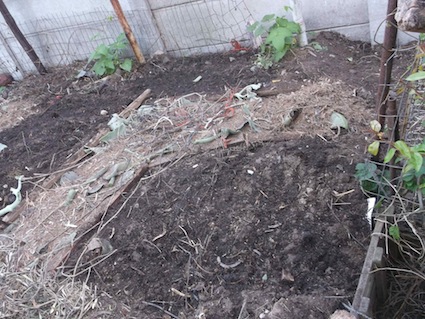 Bed preparation hacks get the grind over quickly
Bed preparation hacks get the grind over quicklythe corner of the bed against the vibracrete wall. you can see the bean and cucurbit companions planted by each pole of the trellis constructed a few weeks ago.
I've compiled a list of the seedlings and established plants in this area to try and group them into companion plantings:
Companion plants
Sorrel Strawberries, blueberries, onions, lettuce, spinach
Mint Chard
Chard Coriander
Okra Cucumbers, chilli
Pelargonium chillis, cabbage, most plants
Basil Tomatoes, chillis
Tomatoes Garlic
Tomatoes Mint
Chillis Onion, chard, lettuce, okra, leeks, radishes, beets, beans tomatoes, garlic, oregano, parsley, rosemary, cucumbers, eggplant, geraniums, petunias nasturtiums
Bulbine lavender, drought tolerant plants
Pumpkin Beans, Mint
Beans, Okra Cucumbers
Beans, Okra Eggplant
Cabbage family, Mustard Thyme
Lettuce Cucumber
A water wise update on bed-preparation hacks
At a recent Guerilla house - Langa Rastafarian Community workshop in Langa I saw sunken beds. I asked about them and Josh told me they are water sparing. So I decided to sink the beds I'm building for the summer of 2017-2018, due to the threat of a very bad drought. The previous setup had sunken paths and slightly raised beds, which tend to drain better and get dry. I used the bed preparation hacks
I've learned, lining the beds with cardboard to suppress weeds, conserve water and add nutrients to the soil.
Time and water saving bed preparation hacks mean that three hours after starting we are ready for planting ! See the bed preparation hacks album for water saving sunken beds prepared in this way.
------
home page for links to gardening tips, and useful tips for the eco conscious home-owner
------
vegetable gardening the natural low cost way
------
gardening with links to lots of information on water saving
------
one of the best worm keeping websites in the world
------
simple bed preparation for flower beds
Restore Nature Newsletter
I've been writing for four years now and I would love to hear from you
Please let me know if you have any questions, comments or stories to share on gardening, permaculture, regenerative agriculture, food forests, natural gardening, do nothing gardening, observations about pests and diseases, foraging, dealing with and using weeds constructively, composting and going offgrid.
SEARCH
Order the Kindle E-book for the SPECIAL PRICE of only
Prices valid till 30.09.2023
Recent Articles
-
garden for life is a blog about saving the earth one garden at a time
Apr 18, 25 01:18 PM
The garden for life blog has short articles on gardening for biodiversity with native plants and regenerating soil for climate amelioration and nutritious food -
Cape Flats Sand Fynbos, Cape Town's most endangered native vegetation!
Apr 18, 25 10:36 AM
Cape Flats Sand Fynbos, a vegetation type found in the super diverse Cape Fynbos region is threatened by Cape Town's urban development and invasive alien plants -
Geography Research Task
Jan 31, 25 11:37 PM
To whom it may concern My name is Tanyaradzwa Madziwa and I am a matric student at Springfield Convent School. As part of our geography syllabus for this
"How to start a profitable worm business on a shoestring budget
Order a printed copy from "Amazon" at the SPECIAL PRICE of only
or a digital version from the "Kindle" store at the SPECIAL PRICE of only
Prices valid till 30.09.2023
